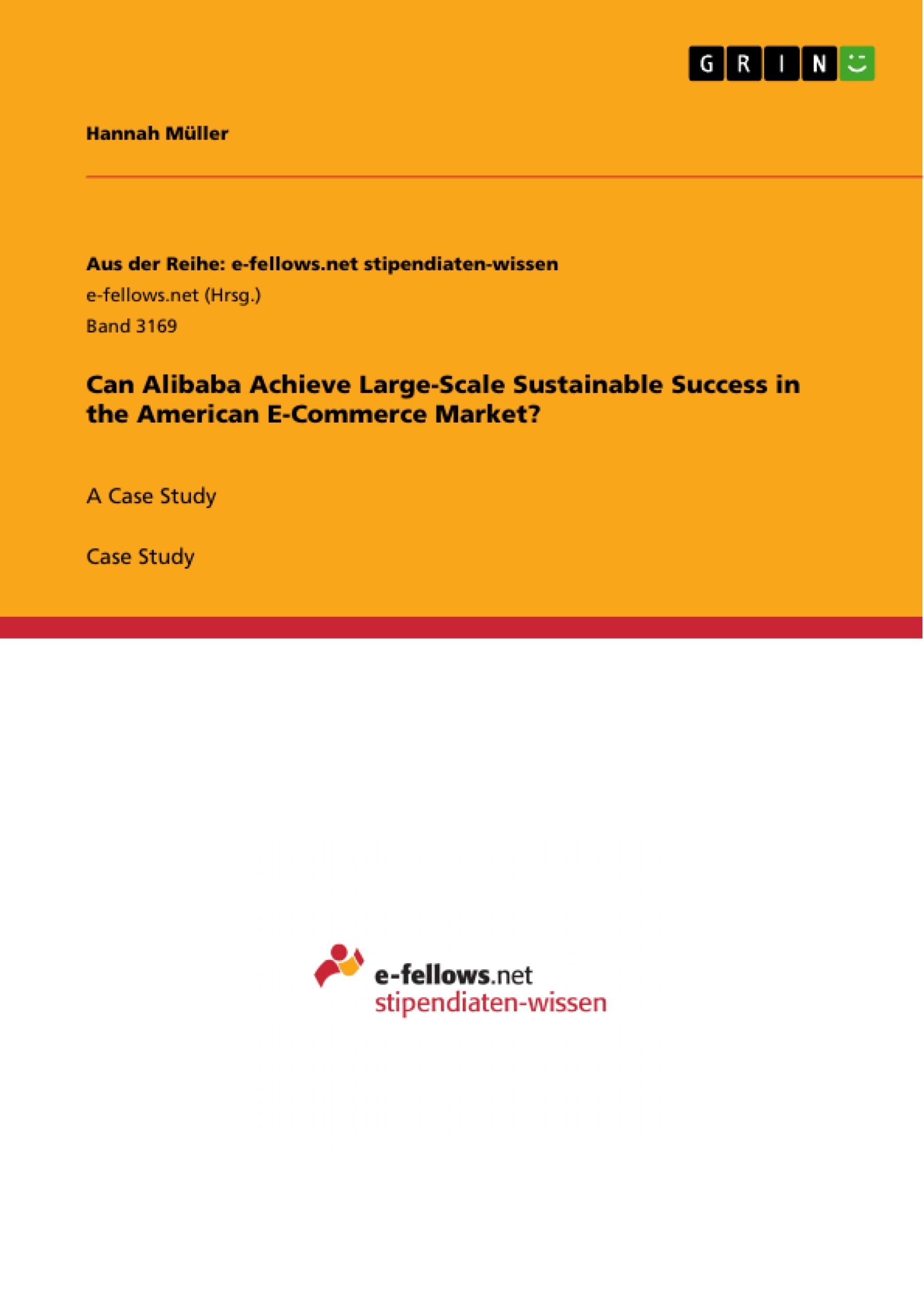This paper is a case study about Alibaba entering the US e-comerce market. Can Alibaba make large-scale sustainable success in the American e-commerce market? Or is the industry not attractive and the market saturated? Alibaba provides technology, infrastructure and marketing to help merchants, brands and businesses to leverage the power of new technology to engage with their customers. The Alibaba Group was founded in 1999 by Jack Ma and 17 other people.
Alibaba was originally founded as a B2B e-commerce portal to connect Chinese manufacturers with overseas buyers. Nowadays, Alibaba ranks in the Top Ten companies in terms of market value. Most of the credit goes to Ma himself, because he utilized the first-mover advantage and successfully planned entrepreneurial growth and corporate initiatives.
Looking back, Ma has traveled more than 800 hours to dozens of countries to meet business leaders and state representatives to convince them of Alibaba´s aim: to let small and medium businesses (SMEs) from all parts of the world trade freely and securely on Alibaba´s platforms. The company´s vision is to achieve $1 trillion in gross merchandise by 2020 and to serve two billion customers by 2036. To achieve this, global operations are key and experts propose: “globalization is better done now than later”. Alibaba is currently experiencing high competitive pressure in China and will need to conquer new territories to continue on current trajectory. Needless to say, entry into the US market will not only be difficult, but also require premium strategic decisions with little to no room for errors.
Inhaltsverzeichnis (Table of Contents)
- Part 1 – Alibaba conquering the United States Market?
- Alibaba Group
- Alibaba Businesses
- The United States B2B and B2C platforms market
- Main competitors
- eBay
- Amazon
- Customers of Alibaba USA - Chinese customers
- Suppliers
- Substitute B2B and B2C marketplaces
- Partners and Alliances
- Can Alibaba continue their success in the US?
- Part 2 - Industry Analysis
Zielsetzung und Themenschwerpunkte (Objectives and Key Themes)
This case study examines the potential for Alibaba, a Chinese e-commerce giant, to achieve sustainable success in the US market. It analyzes the company's history, business model, and competitive landscape in the US e-commerce industry, with a particular focus on the B2B and B2C sectors.
- Alibaba's expansion strategy and its vision for global domination.
- The competitive dynamics of the US e-commerce market, specifically with Amazon and eBay.
- The role of Chinese customers and suppliers in Alibaba's US strategy.
- The potential for Alibaba to leverage its existing customer base and partnerships to penetrate the US market.
- An industry analysis using Porter's Five Forces framework to assess the attractiveness of the US e-commerce industry.
Zusammenfassung der Kapitel (Chapter Summaries)
- Part 1 - Alibaba conquering the United States Market?: This section introduces Alibaba, its vision, and its expansion strategy into the US market. It outlines the challenges and opportunities of entering the US e-commerce industry, dominated by giants like Amazon and eBay.
- Alibaba Group: This section provides background information about Alibaba's history, business model, and growth trajectory. It highlights the company's achievements in the Chinese market and its global ambitions.
- Alibaba Businesses: This section details Alibaba's diverse portfolio of businesses, including its B2B and B2C marketplaces, as well as other platforms and services. It provides an overview of Alibaba's core business model and its key revenue streams.
- The United States B2B and B2C platforms market: This section delves into the specific characteristics of the US B2B and B2C platforms market. It explores the market size, dominant players, and the role of digital exposure in influencing consumer behavior.
- Main competitors: This section examines Alibaba's primary competitors in the US e-commerce market - eBay and Amazon. It highlights their business models, strengths, and the competitive landscape they create.
- Customers of Alibaba USA - Chinese customers: This section explores the role of Chinese customers in Alibaba's US expansion strategy. It examines the growing trend of Chinese consumers purchasing goods from overseas markets, including the US.
- Suppliers: This section focuses on Alibaba's strategy for attracting and managing suppliers in the US market. It examines the company's membership program, factory audits, and its focus on SMEs.
- Substitute B2B and B2C marketplaces: This section identifies alternative B2B and B2C marketplaces that Alibaba will face competition from. It analyzes the strengths and weaknesses of these alternatives, such as purchasing agencies and offline retailers.
- Partners and Alliances: This section explores Alibaba's approach to partnerships and alliances in the US market. It highlights the importance of strategic collaborations in helping Alibaba navigate the unfamiliar territory and gain a foothold.
- Can Alibaba continue their success in the US?: This section concludes Part 1 by posing the central question of whether Alibaba can replicate its success in the Chinese market in the US. It considers the challenges, opportunities, and the potential for sustainable growth.
Schlüsselwörter (Keywords)
The case study focuses on the key themes of global expansion, e-commerce, competition, market entry, and the attractiveness of the US e-commerce industry. It also explores concepts like the network effect, B2B and B2C marketplaces, cross-border e-commerce, partnerships, and the role of Chinese customers and suppliers in Alibaba's success.
- Citar trabajo
- Hannah Müller (Autor), 2019, Can Alibaba Achieve Large-Scale Sustainable Success in the American E-Commerce Market?, Múnich, GRIN Verlag, https://www.grin.com/document/491372



